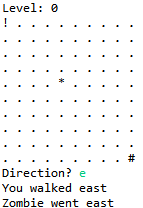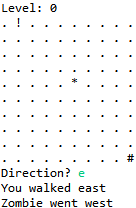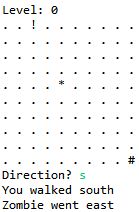Computer Science & Software Engineering
CSCI 135
Fundamentals of Computer Science I
Fall 2011
|
Computer Science & Software Engineering |
CSCI 135 |
Do I really need to worry about strange cases like the last three? Yes. While these cases may seem silly in our imaginary problem, you should always pay attention to such things when developing software. Failure to handle such tricky cases can result in all sorts of bugs such as your program crashing or going into an infinite loop. You might find this entertaining/terrifying: History's Worst Software Bugs.% java Gambler 1000 100 After 1 bet(s), total: 200.0 After 2 bet(s), total: 400.0 After 3 bet(s), total: 800.0 After 4 bet(s), total: 1600.0 Number of bets: 4 Final amount: 1600.0 % java Gambler 12345.67 13.00 After 1 bet(s), total: 26.0 After 2 bet(s), total: 52.0 After 3 bet(s), total: 104.0 After 4 bet(s), total: 208.0 After 5 bet(s), total: 416.0 After 6 bet(s), total: 832.0 After 7 bet(s), total: 1664.0 After 8 bet(s), total: 3328.0 After 9 bet(s), total: 6656.0 After 10 bet(s), total: 13312.0 Number of bets: 10 Final amount: 13312.0 % java Gambler 0.99 0.25 After 1 bet(s), total: 0.5 After 2 bet(s), total: 1.0 Number of bets: 2 Final amount: 1.0 % java Gambler 100 1000 Number of bets: 0 Final amount: 1000.0 % java Gambler 1000.00 1000.00 Number of bets: 0 Final amount: 1000.0
% java Sawtooth 4 2 * * * * * * * * * * * * * % java Sawtooth 1 4 * * * * % java Sawtooth 6 0 % java Sawtooth 0 5
How do I read in a number from the user? You need to use download the StdIn.java class and place it in the same directory as your NumberHunt.java program. When you want your program to read in an int from the user, call the method StdIn.readInt(). For an example program, see OrderProduct.java.% java NumberHunt Guess a number between 1-100? 50 Ice cold. Guess a number between 1-100? 20 Getting warmer. Guess a number between 1-100? 10 Hot. Guess a number between 1-100? 5 Getting warmer. Guess a number between 1-100? 15 Hot. Guess a number between 1-100? 12 You nailed it! It took you 6 guesses. % java NumberHunt 42 Guess a number between 1-100? 10 Ice cold. Guess a number between 1-100? 101 Invalid input! Guess a number between 1-100? 30 Cold. Guess a number between 1-100? 35 Getting warmer. Guess a number between 1-100? 40 Hot. Guess a number between 1-100? 41 On fire. Guess a number between 1-100? 43 On fire. Guess a number between 1-100? 42 You nailed it! It took you 8 guesses.



Page last updated: August 16, 2012